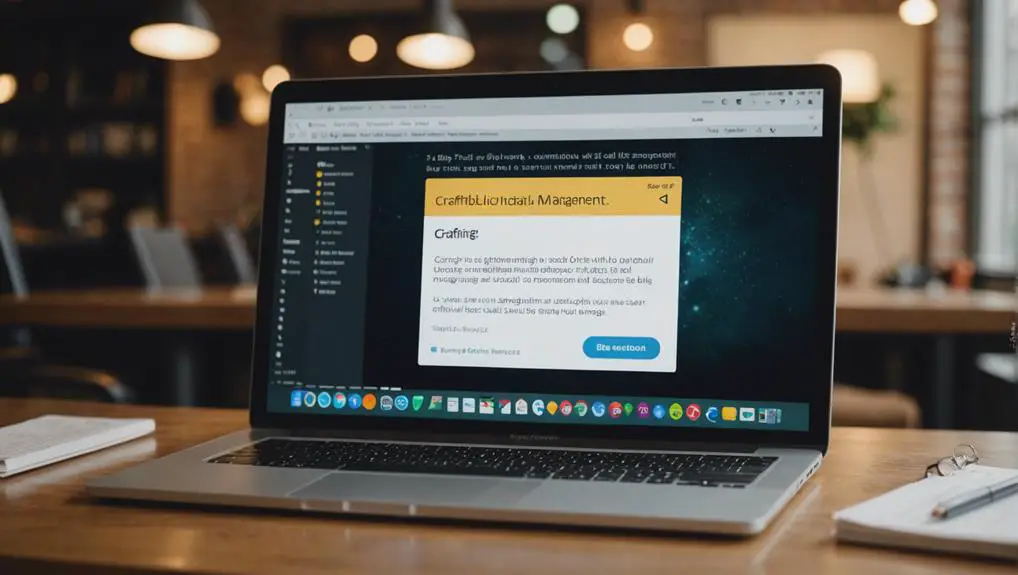Heraclitus once said, “the only constant in life is change.” This is especially true in the business landscape; change will help keep businesses improving and thriving. As a manager, you need to evaluate your change management skills.
To understand whether you are good at change management, analyze your proficiency in research, strategic thinking, communication, active listening, and leadership. If you are highly proficient in these skills, you are likely good at managing change.
This article outlines the change management skills needed when implementing any change – large or small – within an organization. To properly evaluate yourself, you’ll need to compare your ability with each skill I outline. I will also include helpful advice on how you can enhance each skill.
1. Research
Before making any change, you should first do some research to ensure you have the data and information to support the change.
For instance, if you are changing the company’s project management tool, have enough information about how to use the new tool you’re proposing effectively.
Finding data or quoting studies can help support changes you are making to products or even the customer engagement process.
Researching the change you’re making can also help you justify it and answer any questions during the process.
For example, if management initiatives are focused on improving customer experience, you could conduct telephone interviews, set up focus groups, or send out surveys to existing customers to gain data on existing satisfaction levels and perceived problems.
To ensure research isn’t overlooked, be sure to build research time into your project plan. If you are good at researching, you are well on your way to effective change management.
How Can You Improve Your Research Skills?
If you are not a natural researcher, the idea may be daunting. There are several ways to approach the research process, collecting original data and or using existing external data.
What is first party data?
First-party data refers to the research that you do on your own in order to obtain data. It’s a way of getting more information about yourself and your business, so you can make better decisions.
Here are five examples of first party research that you can conduct in business:
Customer Satisfaction Survey: an effective tool for gathering information about customer experiences. This helps you understand what customers think about your business and its products/services and gives you insight into whether your customers are satisfied with your business. If they aren’t, you can improve your business to ensure that they are happy.
Focus Group Research: allow you to gather feedback from potential customers. By asking questions such as “What would you change about my company?”, you can learn valuable insights about your target audience.
Product Testing: allows you to test the quality of your products. You can determine whether your products and packaging are appealing, if the product is easy to use etc. This ensures that you are providing your customers with the highest quality products possible.
Online Analytics: another method used to collect data about your target audience using online tools such as Google Analytics, Facebook Insights, and Twitter Analytics. These tools allow you to see what topics are trending among your followers and which of your blog posts/social posts they react positively to. You can then use this information to develop marketing strategies that resonate with your audience.
Branding Research: Helps you discover what makes your brand unique. You can then incorporate these attributes into your marketing campaigns and change campaigns.
When you conduct first party research, you can uncover valuable information about your business. Use this information to improve your business and ensure that your customers are satisfied.
What is external data?
If you’re researching a topic, and you use information collected and presented by others, you’re using external data.
Some elements to consider when using external data:
- Curate a list of reputable sources. If you are looking for verified research, it is best to go to reputed sources. In the business field, reputed sources may include Forbes, Harvard Business Review, WIRED, and Bloomberg Businessweek.
- Trace citations. If you find helpful information in a publication, check the source information for the article. This will help you verify the information and also expand on your knowledge.
- Talk to colleagues and peers. This form of research involves talking to other leaders who may have experience with the change you’re proposing. As well as giving you first-hand information, they may also point you in the direction of helpful information.

2. Strategic Thinking
When proposing any change, thinking strategically about its short and longer-term impact is crucial. Strategic thinking primarily involves predicting any problems and having a solution at hand for them.
It also involves developing a robust communication channel, rollout, and action plan to manage and track the change.
Strategic thinking is a necessary skill in any area of your business. If you can use it to manage change, you can be sure you are always a step ahead. It will allow you to:
- Make and communicate clear plans when it comes to change.
- Foresee potential problems and proactively come up with solutions.
- Predict support that employees will need through the change process.
How Can You Improve Your Strategic Thinking Skills?
Use visual aids like flow charts or Venn diagrams to improve your strategic thinking skills. You can also bounce your ideas and vision off more experienced managers to help enhance your strategic thinking and planning skills. Enrolling in a professional course can also be a great help.
Here’s a breakdown of how to improve your strategic thinking skills:
- Use visual aids. Visual aids like flowcharts, mind maps, and even diagrams can help you with forwarding planning and also help you communicate plans to others.
- Enroll in an online course. Several online strategy courses may help you enhance your skills.
- Ask yourself questions. Strategic thinking involves being able to come at a problem from multiple directions. This helps you better prepare for any potential future problems. Consequently, constantly asking yourself questions about the process can help you prepare better. Attempt to poke logical holes in your process and think of potential solutions to each problem.
- Experience. Strategic thinking improves the more experience you have in a particular area. If you are venturing into a new area, be sure to talk to someone who has experience with it to support you with your strategic planning.
3. Communication
For any change to be successful, you need to communicate the change with the rest of your team. You should also present a clear structure on how the change will be managed and have a communication protocol for feedback and questions during the change.
If you are a good communicator, you will see that your team can understand and effectively carry out instructions. You will also find that your team is more motivated to carry out tasks.
How Can You Improve Your Communication Skills?
To build on your communication skills, practice formal presentations and get feedback on them. Try to be concise in your communication. You should also be aware of your non-verbal communication.
Here’s a closer look at how to improve your communication skills:
- Prepare and practice. Before communicating anything to your team in a formal forum, outline what you want to communicate and practice this presentation. It’s helpful to get others’ feedback on the presentation so you know what to improve and clarify.
- Keep it short and precise. Try to keep all forms of communication as precise as possible. Sometimes, communicating through tables or flow charts will help.
- Be aware of body language. Always be aware of what your body language is saying – keep eye contact and your posture straight but open. You should also assess your team’s body language to judge their engagement and level of interest.
- Maintain an open communication channel. As important as the actual act of communication is, it can all go to waste if there isn’t a proper communication channel for things to get passed down. Having defined means of contact can ease communication between team members greatly. Group chats, work emails, or Slack channels are all great options.
4. Active Listening
It is helpful to get continuous feedback on the change from all levels of your organization. However, feedback will only help you as much as you can analyze and understand it. This is where active listening comes in.
Active listening refers to how well you are able to receive and understand information. As important as listening is, it’s also important to be able to decipher what you’re listening to properly.
To evaluate your active listening skills, you’ll need to communicate with your other team members and see how well you truly understand what they feel about current processes. The better you can restate the crux of their points, the better your active listening is.
You can also hand out anonymous surveys to gather feedback.
How Can You Improve Your Active Listening Skills?
To improve your active listening skills, you should ensure you are listening without preparing to answer immediately. Give yourself to digest what you hear before you form a response. This allows you to engage in the conversation actively.
Here are a couple of tips on improving your active listening skills:
- Don’t have a prepared answer. To actively listen, you should approach all conversations without a prepared answer or judgment about what the other person will say.
- Listen with no bias. Do not insert your personal bias into your understanding of what you listen to.

5. Leadership
If you are a manager, it will be essential for you to display leadership skills during any change management process. Leadership is a continuously evolving definition. However, in a change process, leadership may mean leading the way, supporting employees, and constructively using feedback.
If you can effectively motivate and support your team through change, you are more likely to be good at change management.
How Can You Build on Your Leadership Skills?
You can always improve your leadership skills; being a leader is recognizing that you are always learning. You can reflect on and recommit to your vision if you lack leadership skills. This will help you inspire and motivate your team more.
One practicable solution is to always be prepared to take charge of situations. Your team looks to you to lead, and it’s important to be competent enough to take charge when necessary.
Final Thoughts
To evaluate your change management skills, you should reflect on a range of different skills that are required to manage change.
These include the ability to research, think strategically, communicate effectively, and lead your team.
Different skills have different approaches, but a good rule of thumb is to make methodical, incremental improvements to allow yourself to gradually adjust and learn.
Getting an external opinion can also be beneficial to personal development. Talk to your management team and ask them to provide feedback on areas they think you could improve, or provide advice on how to approach certain situations.
What Are the Key Indicators of Effective Change Management Skills?
Key indicators of effective change management skills include the ability to communicate a clear vision, empower and motivate teams, and adapt to resistance. Demonstrating change management skills such as flexibility, empathy, and confidence can help navigate through complex transitions and drive successful organizational change.
Sources
- Center for Creative Leadership: How to be a successful change leader
- Forbes: 5 Required Skills for Leading Change
- Forbes: 5 Ways Body Language Impacts Leadership Results
- Harvard Business School Online: 4 ways to develop your strategic thinking skills
- Harvard Business School Online: 5 Critical steps in the change management process
- Harvard Business Review: The Hard Side of Change Management
- Harvard Division of Continuing Education: Eight Things You Can Do To Improve Your Communication Skills
- Havard Business School Online: 4 WAYS TO DEVELOP YOUR STRATEGIC THINKING SKILLS
- Forbes: 5 Required Skills For Leading Change
- Live About: The 8 Best Business Magazines
- Zendesk Blog: 6 essential skills for successful change management




